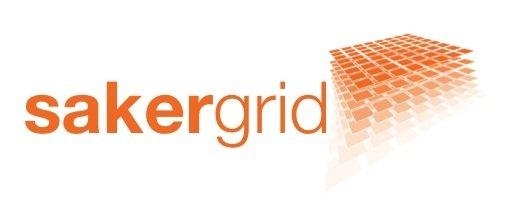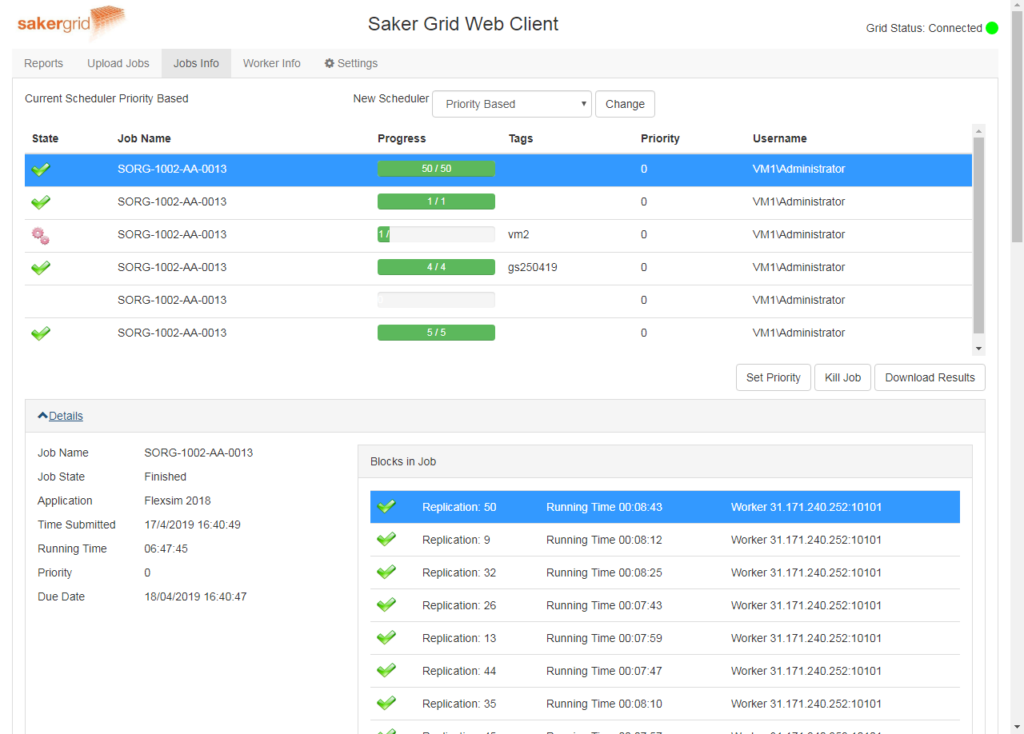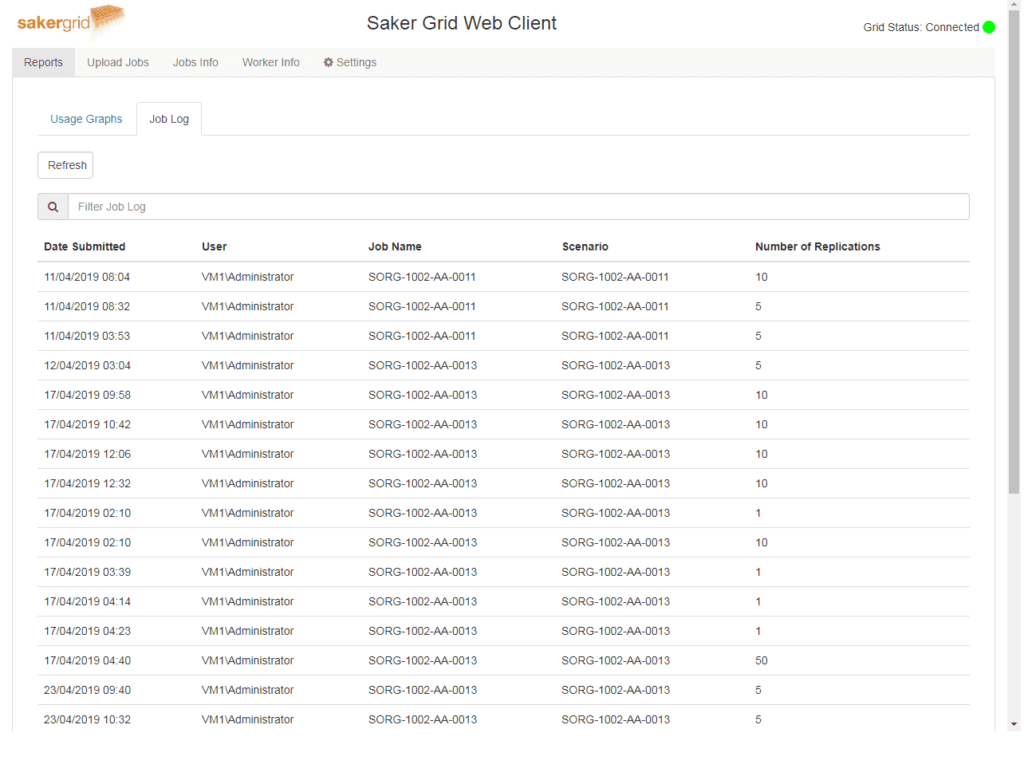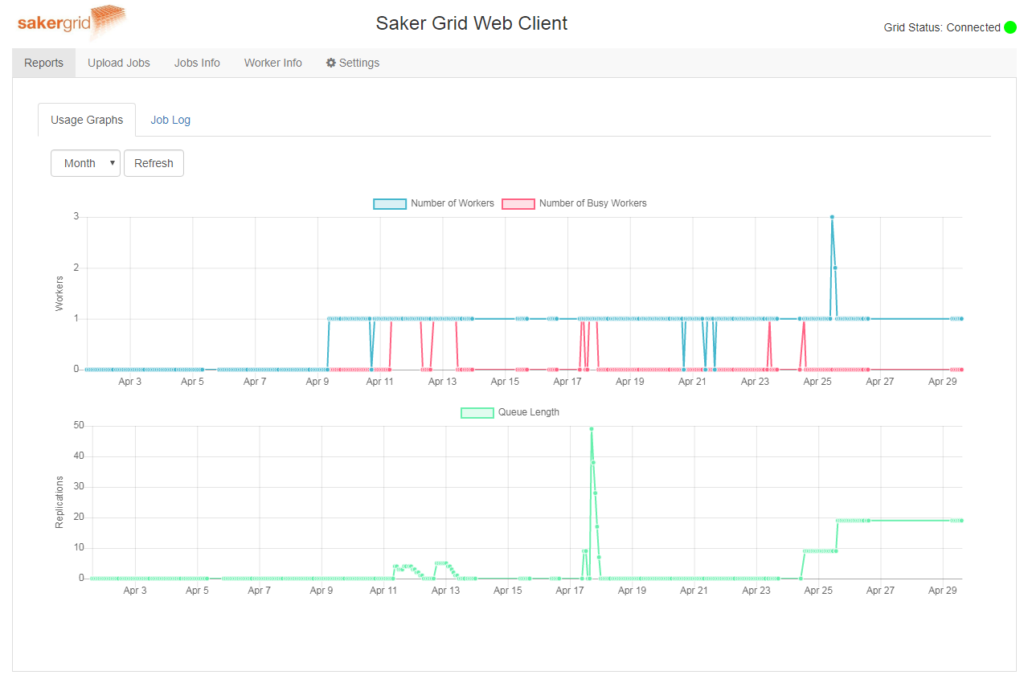SakerGrid meets MiCADO
![]() Saker Solutions, UK, has developed an evacuation simulation with one of their clients that has a need to study the evacuation of people from one of their facilities / sites. In developing the simulation model it became clear that the model had to be run many times because of the need to compare different evacuation policies / strategies. Moreover, each strategy could be initialized with different sets of starting conditions (personnel at different locations, for example). This gave rise to a need for numerous scenarios to be simulated. Additionally, each scenario also needed to be run for multiple replications to allow for the fact that variance in statistical distributions (for example for walking speed) or the outcome of probabilities would vary between replications. These differences need to be statistically analysed in order to reach statistically valid results / conclusions. The aforementioned factors mean that a vast amount of simulations needs to be run which, using a traditional approach, would extend the time horizon for decision-making (whilst the users wait for their simulations to complete). In reality this constraints the number of experiments that can be performed due to the availability of physical resources.
Saker Solutions, UK, has developed an evacuation simulation with one of their clients that has a need to study the evacuation of people from one of their facilities / sites. In developing the simulation model it became clear that the model had to be run many times because of the need to compare different evacuation policies / strategies. Moreover, each strategy could be initialized with different sets of starting conditions (personnel at different locations, for example). This gave rise to a need for numerous scenarios to be simulated. Additionally, each scenario also needed to be run for multiple replications to allow for the fact that variance in statistical distributions (for example for walking speed) or the outcome of probabilities would vary between replications. These differences need to be statistically analysed in order to reach statistically valid results / conclusions. The aforementioned factors mean that a vast amount of simulations needs to be run which, using a traditional approach, would extend the time horizon for decision-making (whilst the users wait for their simulations to complete). In reality this constraints the number of experiments that can be performed due to the availability of physical resources.
 With MiCADO‘s R&D partner Brunel University, Saker Solutions developed a high performance computing Grid – SakerGrid. This enabled the computing resources in a desktop grid to be ‘harvested’ with SakerGrid distributing work to idle resources to execute simulation runs in parallel in order to compress the timeframe to obtaining results. With the help of MiCADO, Saker Solutions will be able to increase the available computing power through the use of scalable on-demand resources – a cloud-based version of SakerGrid will enable greater expansion and a significantly greater number of alternative scenarios to be tried / evaluated. This will not only reduce the time to run a simulation but also should mean that the quality of decision-making is improved by exploring more scenarios and therefore coming up with better, more robust decisions.
With MiCADO‘s R&D partner Brunel University, Saker Solutions developed a high performance computing Grid – SakerGrid. This enabled the computing resources in a desktop grid to be ‘harvested’ with SakerGrid distributing work to idle resources to execute simulation runs in parallel in order to compress the timeframe to obtaining results. With the help of MiCADO, Saker Solutions will be able to increase the available computing power through the use of scalable on-demand resources – a cloud-based version of SakerGrid will enable greater expansion and a significantly greater number of alternative scenarios to be tried / evaluated. This will not only reduce the time to run a simulation but also should mean that the quality of decision-making is improved by exploring more scenarios and therefore coming up with better, more robust decisions.
Note that whilst the evacuation model is ideally suited to being scaled up to reduce the time taken to run a simulation, other simulation models will also benefit from the on-demand scaling and time reduction. There are therefore benefits for most simulation models / client project that study the performance of other facilities and systems, for example logistics, manufacturing, construction, decommissioning, etc.
This use case will provide users with an ability to either run simulations on their local desktop grid or send the job to the cloud where it will be scaled using on-demand resources so that the simulation results are received within a required deadline. This has the benefit of avoiding significant capital investment in what would be under-utilised resources (software licences and hardware) whilst ensuring that access to such resources can be provided in a timely, cost-effective manner. It also saves other costs such as the energy that would be consumed from having local computing resources switched on overnight or throughout a weekend.
The capability to use on-demand cloud based resources in conjunction with SakerGrid will provide an end user with the ability to run more simulation experiments. Moreover, it will also provide the ability to run the correct number of replications of each experiment in a timely fashion thereby ensuring that statistically valid results are obtained at the earliest opportunity. This will deliver the following benefits:
- Improved quality of decision-making by exploring a wider range of scenarios
- Reduced time to decisions
- Greater confidence in decision-making by running:
- Many scenarios:
- Different strategies
- Different starting conditions
- Many scenarios:
- Improved realization of benefits:
- Cost avoidance/reduction
- Capital justification
- Reduced inventory
- Reduced lead-times
Note that these benefits apply to other simulation models as well.
Ultimately Saker Solutions has an aspiration to expand on this capability to capitalize on opportunities for High performance Simulation Analytics for Industry.




